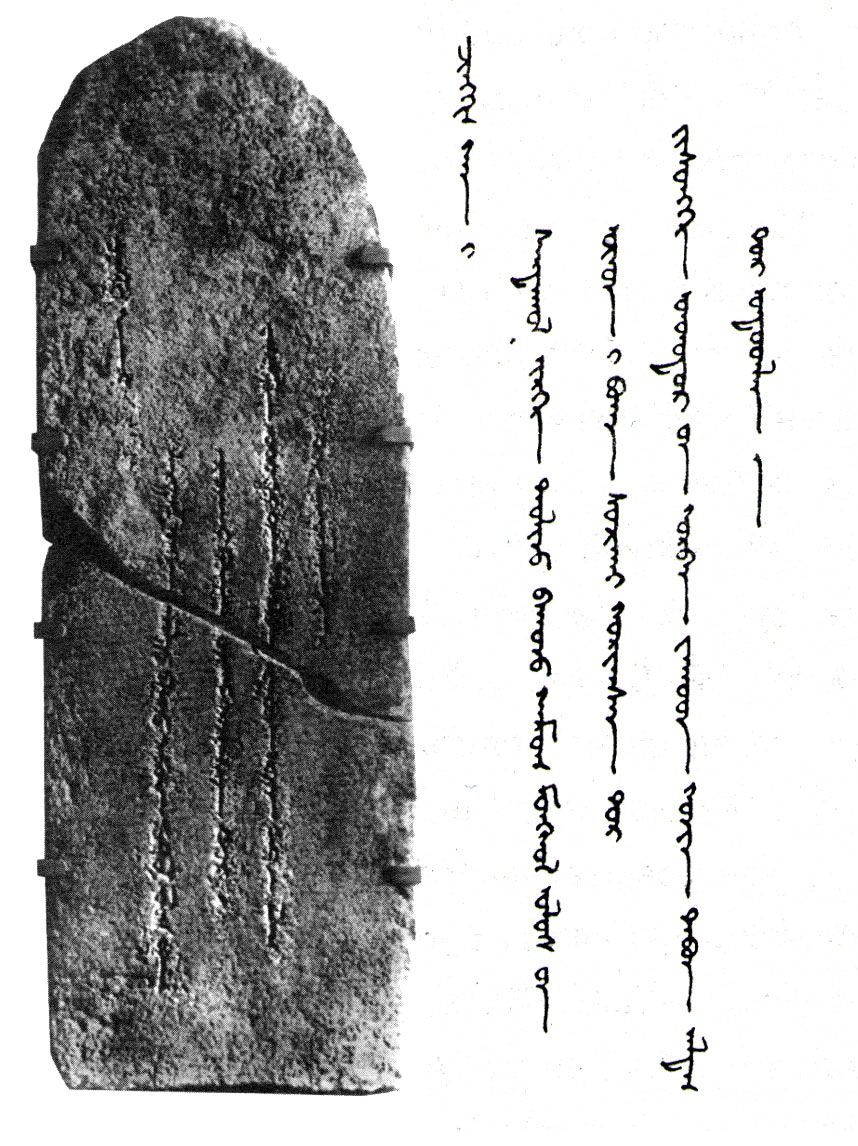
|
[1] Činggis Qan-i
[2] Sartaγul irge (d)aγuliju baγuju qamuγ Mongγol ulus-un
[3] noyad-i Buqa (S)očiγai quriγsan-dur
[4] Yisüngge ontudur-un γurban jaγud γučin tabun aldas-
[5] tur ontudulaγ-a
|
The Stone of Genghis-khan is the most ancient written monument of mongols. The scholars
suppose that it was erected approximately in 1224-1225 after the conquest of Khwarezm (1218-1224). This stone was found by russian scientist
G.I.Spasskij in 1832, who brought it to Saint-Petersburg. It is now in the collection of the famous museum of Hermitage.
Translation of Igor de Rachewiltz and Volker Rybatzki (Introduction to Altaic philology, 2010: 162):
literaly: 'When Činggis Qan, despoiling the Sartaγul people, dismounting, the noblemen of the entire Mongol nation had gathered (at) Buqa Sočiγai. Yisüngge, when long-distance shooting, shot (an arrow)
at long distance to 335 aldas'
i.e: 'When Činggis Qan, having subjugated the Sartaγul (= Muslim) people set up camp and the noblemen of the entire Mongol nation had gathered at Buqa Sočiγai. When Yisüngge shot at the long dictance
(shooting contest), he shot an arrow 335 fathoms'.
In other words
After the victory over Sartool Genghis-khan made a feast for all the mongols.
During the feast arrow shooting competition was organized. The best shooter was lord Yesunke,
a grandson (or, according to some sources, nephew) of Genghis-Khan, who shot an arrow up to the 335 fathoms'
Доржи Банзаров. Объяснение монгольской надписи на памятнике князя Исунке, племянника Чингис-хана //Записки Императорского
археологического общества, т. III, СПб 1851 г., стр. 268-292
|
